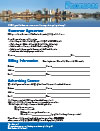The Heat Is On: Work Stress on the Rise
- Details
- Published on Monday, 06 February 2017 18:00
- Written by The Peorian
Having trouble "keeping calm and carrying on" at work? You're in the majority.
More than half (52 percent) of workers said they are stressed at work on a day-to-day basis, and 60 percent reported work-related pressure has increased in the last five years, according to a new survey by staffing firm Accountemps.
Their concerns are not lost on executives: 54 percent of CFOs acknowledged their teams are stressed, and 55 percent said worker anxiety is on the rise. Employees polled cited heavy workloads and looming deadlines (33 percent), attaining work-life balance (22 percent), and unrealistic expectations of managers (22 percent) as top worries.
"Business is moving faster than ever, and employees can feel the crunch when it comes to imminent deadlines," said Bill Driscoll, a district president for Accountemps. "Workers shouldn't suffer in silence. They can tap internal resources for help or seek advice from their managers to ensure they meet work expectations, while maintaining a healthy work-life balance."
Driscoll added, "A stressed employee can have detrimental effects on the department or company, including decreased morale and productivity, and increased burnout and turnover. Managers should look for signs their staff is overworked — like missed deadlines or excessive overtime — and talk to employees to pinpoint triggers and implement stress-relieving solutions."
Additional points from the Accountemps survey:
- Younger workers are feeling the pressure: 64 percent of professionals between the ages of 18 and 34 admitted to being stressed on the job, compared with 59 percent of workers ages 35 to 54 and only 35 percent of respondents ages 55 and older.
- Gender differences exist: Slightly more men (57 percent) than women (47 percent) said they are stressed at work on a daily basis.
- CFOs reported the most stressed staff in the following cities: 1) Salt Lake City, 2) Boston and Des Moines (tied), 4) Cleveland and 5) New York
- Professionals shared the following ways they combat stress at work: exercise daily (e.g., yoga, walking, running), enjoy time with friends or a significant other after work, engage in a hobby (e.g., gardening, reading), listen to music and take vacation time to recharge.
Accountemps offers employees and managers the following tips for combatting work-related stress:
| Employee Tips | Manager Tips |
| Protect your time. Staying organized is critical to finishing tasks. Rather than trying to juggle two things at once, schedule periods throughout the day to focus on key assignments. | Help prioritize. Meet with team members individually to help prioritize workloads and set realistic expectations about project deadlines and desired outcomes. If there is too much work to go around, bring in temporary professionals to lighten the workload for full-time employees. |
| Speak up. If your to-do list is never-ending, it's possible you have too much on your plate. Talk to your manager about your workload and ask for help. | Offer resources. Encourage your team to take advantage of stress-management webinars, wellness tips or programs, and yoga or meditation classes available to them. Set a good example by utilizing these offerings as well as employee breakrooms or lounges. |
| Take a break. Feeling overwhelmed during the day? Step away from your desk, go for a walk or grab a snack. If you can't get outside, look away from the computer and focus on a non-work related activity for a few minutes. | Make it fun. The job may be serious, but laughter and camaraderie can lead to greater work satisfaction and happiness. Look for ways to lighten the mood through social activities, staff celebrations or office decorations. |
About the Research
The surveys were developed by Accountemps and conducted by independent research firms. They include responses from more than 2,200 CFOs from a stratified random sample of companies in more than 20 of the largest U.S. metropolitan areas and more than 1,000 U.S. workers age 18 and older who work in an office environment.



















































